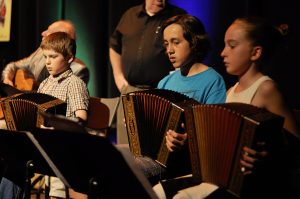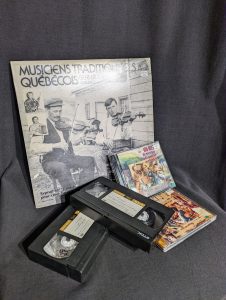“Hum a few bars! We played by ear!”
These words, spoken by accordionist Roger Gendron, highlight the lack of a written tradition. Instead, musical knowledge was passed down in person, with musicians learning to play by ear.
Many great traditional accordionists were unable to write or read music. Blessed with a good ear, they learned by observing their peers, copying melodies and asking their mentors for advice.
Despite a lack of formal training, many of these accordionists could play dozens and dozens of pieces from memory, allowing them to entertain audiences for hours on end.
A Body of Knowledge With Many Sources
Until the 1950s, accordionists were typically taught to play by family and friends. Older musicians can remember a time when they relied exclusively on their memory to learn and reproduce the pieces they had heard. Later generations had the benefit of vinyl records, VHS tapes and compact discs.
Armand Labrecque talks about how learning to play the accordeon has evolved:



